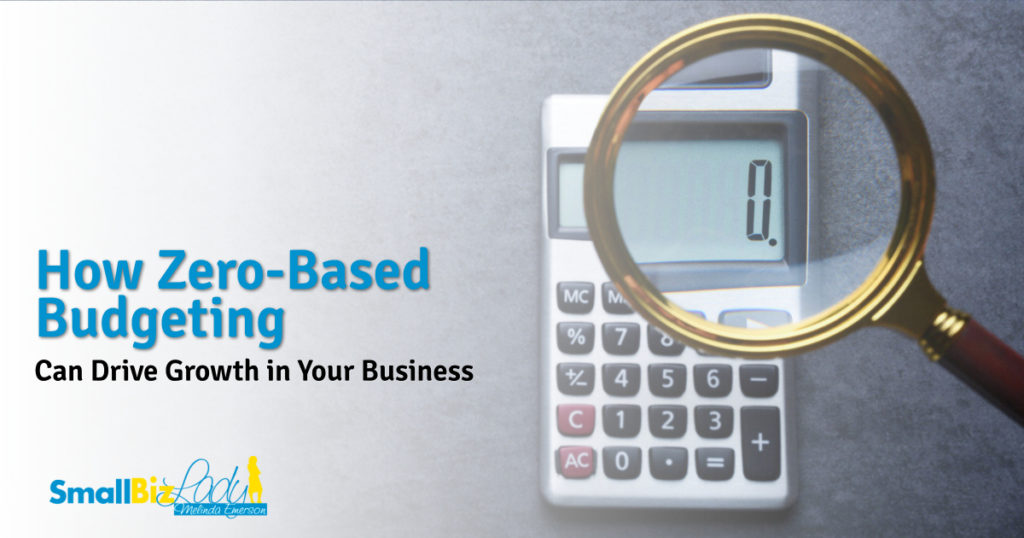How Zero-Based Budgeting Can Drive Growth in Your Business

 A zero-based budgeting method includes building a new budget from the initial stage each time, beginning from “zero”. This budgeting method is different from traditional Budgeting, which involves looking at the past session’s budget and altering it as required.
A zero-based budgeting method includes building a new budget from the initial stage each time, beginning from “zero”. This budgeting method is different from traditional Budgeting, which involves looking at the past session’s budget and altering it as required.
With the guidance from technological advancements, a reduction in manual labor is experienced with enhanced transparency, due to which more and more organizations are switching to Zero-Based Budgeting.
What is Zero-Based Budgeting?
Despite looking at traditional budgeting methods, zero-based budgeting approaches the individual cost classifications all over the business units.
The zero-based budgeting method distributes funding relying on the program’s efficiencies, where not even a single item is passed over to the next budget.

After reviewing each program and calculating the expense at the start of each budget cycle, budgeters need to justify every line item in the budget to receive the funds. However, making the budget from scratch can come across as a big task to many business owners. On the other hand, the zero-based budgeting methods come with unique advantages.
If done correctly, it can result in dire savings and eliminate the long-established process of Budgeting from the organization.
Need to try Zero-Based Budgeting in your business – Pros

When performed correctly, zero-based budgeting can bring out operational paucity, revive growth, and thrive in business staging.
- Lower Costs: Zero-based Budgeting helps lower the cost by eliminating an automatic increase in budget, which generally results in savings. Keeping track of new as well as old expenses in check can save you from spending unnecessarily. Microsoft Dynamics 365 is one of the best budgeting tools to simplify your business.
- Improves Management of Cost: The repeated methods build a sustainable foundation for managing cost. The zero-Based Budgeting approach involves keeping your cash flow on your tips so that you are entirely aware of how much money is earned and spent in your business.
- Find Duplicate Spending: the approach by which zero-based budgeting moves helps to look out for duplicate spending. It starts from scratch and records your financial data from the beginning gives you a fresh perspective to set data for analysis. The information pieces are processed across the organization without leaving any door unopened to reveal shortfalls that may have been missed.
- Better Decision Making: the process of zero-based budgeting leads to a more strategic and well-planned allotment for expenditure for the tenure. Business owners get the opportunity to look at the business from the new revised perspective, free from any past assumptions, and make better decisions for the company’s thriving success.
Limitations of Zero-Based Budgeting

Although zero-based budgeting opens the path to thrive, some factors need to be considered before opting for this approach:
- Time-Consuming: This approach depends on the “Start from scratch” strategy, which states that it will be a lengthy and time-consuming process. Zero-Based Budgeting needs to be constantly monitored around spending. You must justify every element of the budget and review new components, which takes up a lot of time and resources.
- Short-term Thinking: Zero-Based Budgeting grants short-term thinking as it shifts resources towards those areas of your company that will help generate revenue for that tenure. You must develop a revised or new plan to start your budgeting process from scratch with every term. Creating one long-term budgeting strategy won’t apply to this approach. Instead, you will end up planning for the organization’s budget every time you start the process.
- Human resources requirement: this approach involves a lengthy process from reviewing cash flow to building a new strategy. Starting from scratch needs an immense workforce dedicated to this project.
Having to recreate a budget for your company from scratch demands time and resources. When talking about resources, it needs workforce, hiring, payments, salaries, and input from senior management. This will consume many working hours from employees and shift their day-to-day jobs to dedicate their time to the budgeting process.
Hence, we can say that zero-based budgeting is a costly method.
Steps to start a Zero-Based Budgeting!

Five easy steps to get started are as follows:
- Identification of goals – Identify the company’s goals, start with quantifying goals and jot them down. This will be the core step to tracking your efforts in the given timeline and getting each one aligned according to your strategic plan.
- Know your monthly revenue – Adding up everything, from project work to recurring income, operating expenses, payroll, and investments. Keep the record accurate for a better outcome.
- Evaluate your monthly expenses – Carefully track your expenditure and monitor your monthly expenses. Evaluating costs and expenses is essential for your organization.
- Categorizing expenses – Categorize your expenses and determine your income that is going to each category; this is when you track your expenses and decide if it is vital to your company. Categorizing expenses give you a picture of the profitable areas and growth driven.
- Scale your Goals – Look at your past goals and evaluate what you would have done differently? What are the discrepancies? What are the areas which need improvement? And lastly, what all measures can you take to improve the loopholes that you have uncovered?

To successfully implement the zero-based budgeting approach, firstly remove the manual process and establish a cost-category owner.
Eliminating Manual Processes: Automating the processes eliminated the errors, resulting in efficient work outcomes. Automation reduces the possibility of error, but it streamlines the categorizing processes and tracking expenses, reducing the burden of completing tasks manually that are not even part of the employee’s main job role. It gives time to focus on other functions like creating strategic plans to thrive in the business.
Establish a Cost-Category Owners: The cost-category owners process the budget requests connected with a specific category of expenses. The cost-category owners assist budget processors who monitor the facilities like security expenses, rent, and more. Many companies have a separate cost-category owner for HRs. Senior management generally performs this role, who adds it to their part of the daily role.
Zero-based budgeting, introduced in 1960, has a slow start due to the manual tasks involved. However, despite being time and resource-consuming, zero-based budgeting is the method that can drive your company towards profitability and growth to keep it going in the long run.
 About the Author: Alice Jackson, I am a Content Strategist and Marketing expert at Dynamics Square – Gold-Certified Microsoft Dynamics Partner in USA, trusted by 250+ customers. . I also have strengths in managing branding & marketing activities for startups, small businesses, and entrepreneurs.
About the Author: Alice Jackson, I am a Content Strategist and Marketing expert at Dynamics Square – Gold-Certified Microsoft Dynamics Partner in USA, trusted by 250+ customers. . I also have strengths in managing branding & marketing activities for startups, small businesses, and entrepreneurs.
Read More
Source

No comments